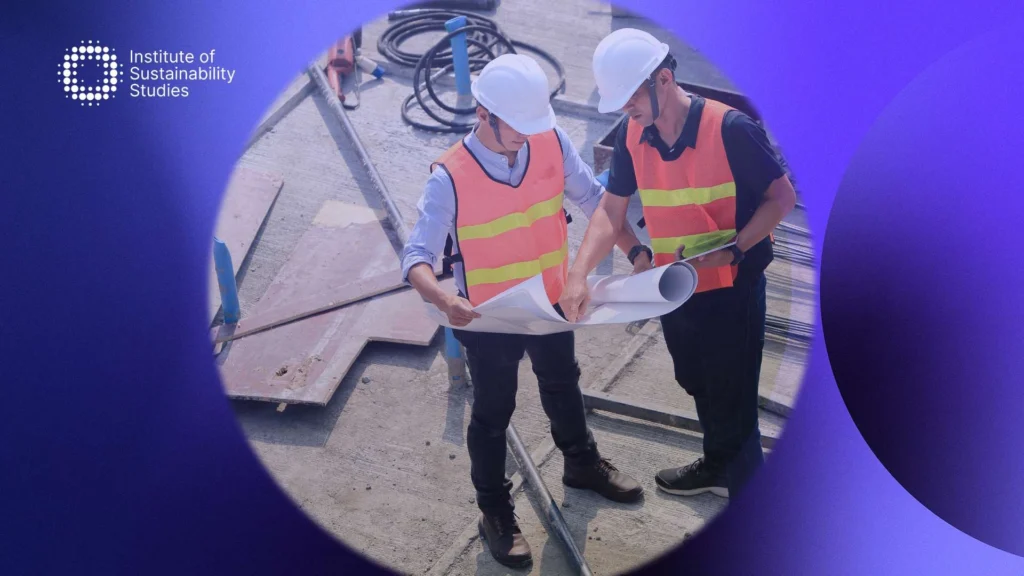Across cities and towns, buildings stand as both the backbone of our economies and some of the biggest contributors to global emissions. They heat, cool, light, and shelter us, but most were never designed with sustainability in mind. While new, energy-efficient buildings often dominate the conversation around green building, the reality is that most of the buildings that will exist in 2050 have already been built. That’s where retrofitting comes in as a strategic response to the evolving demands of climate policy, resource efficiency, and market competitiveness. Keep reading as we explore how construction companies can unlock its full potential.
What is retrofitting in the context of green building?
Retrofitting in green building refers to the process of upgrading existing buildings with sustainable technologies, materials, and systems to improve energy efficiency, reduce environmental impact, and align with modern climate goals, without demolishing or fully reconstructing the structure.
Below are some of the key features of green retrofitting:
- Energy upgrades: Insulation, energy-efficient windows, LED lighting, and HVAC modernisation.
- Water efficiency: Low-flow fixtures, greywater systems, and rainwater harvesting.
- Renewable integration: Adding solar panels, heat pumps, or green roofs.
- Smart systems: Building automation for lighting, heating, and energy use monitoring.
- Material optimisation: Use of non-toxic, low-impact, and recycled building materials.
From design to delivery - train every team member to lead on sustainable
construction with our accredited, in-demand company-wide training
The case for retrofitting the built environment
Retrofitting the built environment presents one of the most cost-effective and immediate opportunities to reduce greenhouse gas emissions, improve energy efficiency, and adapt infrastructure to future climate demands. According to the International Energy Agency (IEA), buildings account for nearly 30 percent of global energy consumption and 26 percent of energy-related CO₂ emissions.
Given that the majority of the building stock expected in 2050 already exists today, improving existing structures is pragmatic but also essential to achieving net-zero targets. The case for retrofitting is also reinforced by economic and social co-benefits. In other words, retrofitted buildings typically deliver 30 to 50 percent reductions in energy use, with enhanced indoor air quality, thermal comfort, and occupant well-being.
Moreover, research by the Global Alliance for Buildings and Construction suggests that deep renovation projects can create 15 to 20 local jobs per million dollars invested, providing a boost to green employment and local economies. On top of that, retrofitting improves the resilience of buildings against extreme weather events, which are increasing in frequency due to climate change.
Financially, retrofitting offers long-term returns by reducing operational costs, increasing property value, and aligning assets with emerging ESG criteria. Regulatory pressures (such as the EPBD) are also tightening, making proactive retrofitting an essential risk management strategy. Forward-looking organisations and governments are beginning to embed retrofit strategies into national climate plans and urban development policies to meet climate goals and position themselves competitively in a low-carbon economy.
Strategies for scaling retrofitting in green building
Scaling retrofitting in the construction sector demands strategic alignment, operational integration, and access to capital. Here’s how construction businesses can lead the charge.
Incentivise through clear, aligned policy
Governments must create predictable retrofit pipelines through mandatory building performance standards, streamlined approvals for retrofit work, and green procurement mandates. Construction firms should stay ahead of regulatory shifts and position themselves as retrofit specialists within frameworks like the EU’s Energy Performance of Buildings Directive.
Tap into retrofit-ready financing
Construction businesses can unlock growth by aligning with clients and developers that are leveraging:
- Green bonds and ESG-linked project finance
- Energy performance contracting (EPC) with guaranteed savings
- Public-private partnerships (PPPs) and municipal retrofitting schemes
These models reduce risk and offer opportunities to diversify into retrofit-centric service models.
Build retrofit-specific workforce capability
The retrofit market requires a shift from traditional new-build skill sets to integrated, multidisciplinary teams with expertise in:
- Passive design upgrades
- Building fabric improvements
- Smart energy and water systems
Firms must invest in upskilling site teams, training supervisors, and certifying new retrofit roles to stay competitive and meet growing demand.
Leverage data and digital twin technology
Digital audits and Building Information Modelling (BIM) tailored for retrofit scenarios can significantly reduce costs and increase project accuracy. Smart energy monitoring, embedded sensors, and AI-driven diagnostics also improve post-retrofit performance assurance, critical for meeting performance-based contracts.
Aggregate and standardise retrofit delivery
Construction firms can reduce cost and complexity by bundling similar retrofit projects across property portfolios or local authorities. Pre-fabricated retrofit components and modular solutions also speed up delivery and reduce disruption for occupants.
Market retrofit as value-add, not disruption
Educating clients, especially in commercial property and real estate, on the financial, compliance, and asset resilience benefits of retrofitting is essential. Construction firms that can offer turnkey retrofit solutions with clear ROI data will have a strong market edge.
Upskill your people to meet the growing demand for sustainable buildings with accredited, flexible training
Challenges and how to overcome them
Scaling retrofitting in green building is essential for climate action, but it faces a range of structural, financial, and operational challenges.
High upfront costs for clients
Challenge: Many clients, particularly in commercial real estate, are cautious about initial retrofit costs.
Solution: Partner with financial institutions or performance contracting specialists to present funding options that reduce capital barriers. Offer cost-modelling tools and highlight long-term operational savings.
Limited retrofit design expertise
Challenge: Retrofitting existing structures is often more complex than new builds, especially in older or mixed-use buildings.
Solution: Invest in specialist teams or form partnerships with retrofit-focused design consultants. Use BIM and 3D scanning to map existing conditions and develop retrofit-specific construction plans.
Workforce shortages in retrofit trades
Challenge: Retrofit projects require trades trained in energy upgrades, airtightness, and low-carbon materials – skills not always present on general construction teams.
Solution: Upskill site teams through CPD-certified courses, invest in training partnerships with local trade schools, and create fast-track certification pathways for retrofit-specific competencies.
Client reluctance due to disruption
Challenge: Retrofit work can be perceived as disruptive to occupants or operations, especially in commercial and residential settings.
Solution: Offer phased retrofitting schedules, temporary relocation services, and noise/dust mitigation plans. Use off-site construction to reduce on-site time.
Navigating complex regulatory requirements
Challenge: Fragmented codes, heritage building restrictions, or unclear compliance paths can stall projects.
Solution: Dedicate internal resources or engage specialists to navigate local codes, especially for heritage and multi-tenanted properties. Proactively engage with local planning authorities to fast-track approvals.
Construction firms that master these retrofit challenges are uniquely placed to capture new markets, support decarbonisation goals, and become long-term partners in shaping a resilient built environment.
Conclusion
The case for retrofitting is no longer about “if” but “how fast.” As pressure mounts from regulators, investors, and the climate itself, organisations that act now will shape the future of the built environment and the market. Retrofitting is more than an infrastructure upgrade; it’s a business opportunity to reduce costs, enhance resilience, and deliver long-term value.
However, strategy alone won’t close the gap; capability is the key. Without the right skills, insights, and implementation frameworks, even the most ambitious plans will fall short. Organisations that invest in corporate compliance training for their teams will lead their sector, attract top talent, and future-proof their operations.










